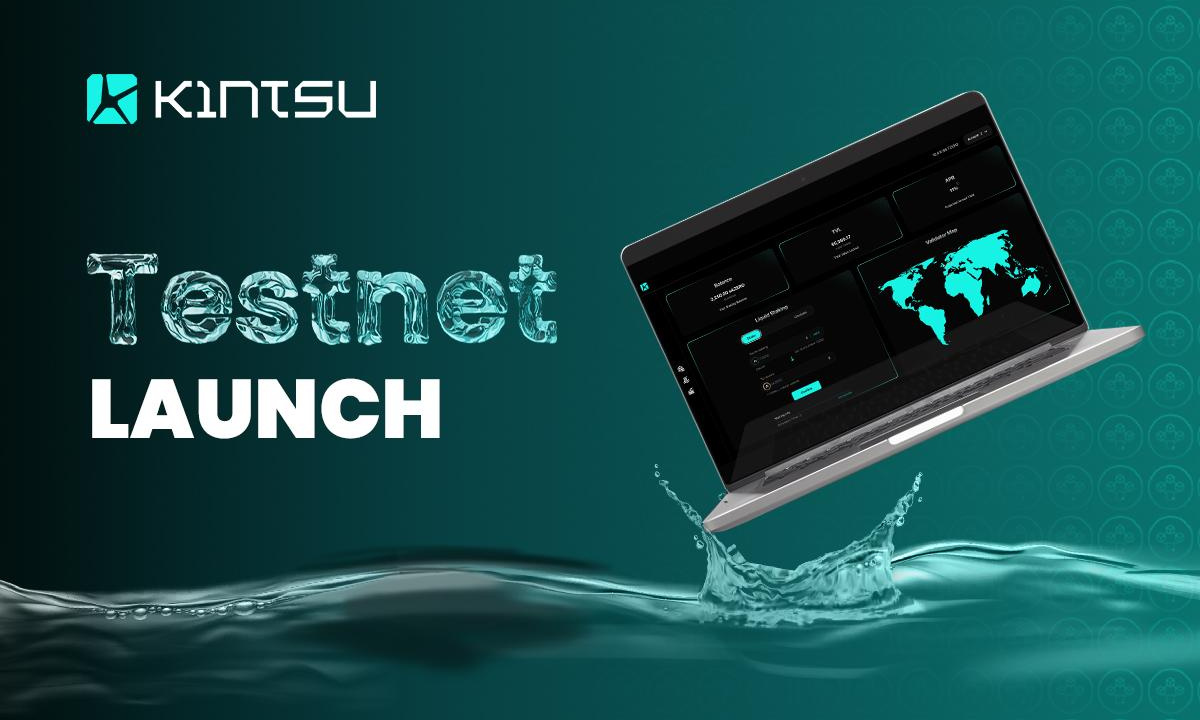Review Osmosis (OSMO) – Everything You Need To Know About AMM DEX
AMM (Automated Market Maker) is the liquidity center of an ecosystem. Some outstanding examples of AMM like Binance Smart Chain have PancakeSwap, Ethereum have Uniswap and Balancer. So Cosmos ecosystem with the connection of many blockchains, which AMM stands out in the Cosmos ecosystem? In this review, we will together find out about Osmosis (OSMO) – the AMM of the Cosmos ecosystem. Let’s find out together to discover more about Osmosis.

What is Osmosis (OSMO)?
Osmosis is a cross-chain automated market maker (AMM) protocol built using the Cosmos SDK that allows developers to design, build and deploy their own customized AMMs.
Outstanding Features
What is the project trying to achieve?
Osmosis is an automated market maker (AMM) protocol that allows developers to create bespoke AMMs with sovereign liquidity pools. Osmosis, which was built with the Cosmos SDK, makes use of Inter-Blockchain Communication (IBC) to facilitate cross-chain transactions. In other words, Osmosis is a decentralized exchange designed particularly for Cosmos, with intention to spread to other blockchains in the future.

Osmosis is one of the first Cosmos-based AMM DEX. TVL of Osmosis increase 100% since the beginning of 2022 ( $811.63m – $1.79b), Besides Cosmos is top 20 in the cryptocurrency market so the growth potential of Osmosis in the future is feasibility. Osmosis is inspired by Uniswap, Balancer, and Curve Finance, so it has the advantages of all three mentioned AMMs. The goal for Osmosis is to provide the best-in-class tools that extend the use of AMMs within the Cosmos ecosystem beyond traditional token swap-type use cases.
Osmosis is a sovereign Cosmos zone that draws its sovereignty not only from its application-specific blockchain architecture but also from the collective sovereignty of the LPs who have aligned interests in various tokens for which they provide liquidity.
What is the unique selling point?
Liquidity Pools’ Customizability
Most major AMMs limit the number of variables that may be changed in liquidity pools. For example, Uniswap only allows the creation of a two-token pool of equal ratio with a swap fee of 0.3%, Balancer minimum Swap Fee – 0.0001%, and maximum Swap Fee – 10%. The Uniswap protocol’s simplicity allows for easy onboarding of the ordinary user who previously had little to no expertise in market making.
However, as the DeFi market expands in scale and market participants such as arbitrageurs and liquidity providers mature, the necessity for liquidity pools to respond to market conditions becomes clear. The best swap cost for an AMM trade may be determined by a number of factors, including block periods, slippage, transaction fees, market volatility, and others.

Liquidity Pools of Osmosis – Source: app.osmosis.zone
The tools Osmosis provides allow the market participants to self-identify opportunities and allow them to react by adjusting the various parameters. An optimal equilibrium between fee and liquidity can be reached through autonomous experiments and iterations, rather than setting a centrally planned ‘most acceptable compromise’ value. This extends the addressable market for AMMs and bonding curves beyond simple token swaps, as a limitation on the customizability of liquidity pools may have been the inhibiting factor for more experimental use-cases of AMMs.
Self-Governing Liquidity Pools
The pool governance feature of Osmosis allows a diverse spectrum of liquidity pools with risk tolerance and strategies to not only exist but evolve.
In Osmosis, the liquidity pool shares are not only used to calculate the fractional ownership of a liquidity pool, but also the right to participate in the strategic decision making of the liquidity pool as well. To incentivize long-term liquidity commitment, shares must be locked up for an extended period. Longer-term commitments are awarded by additional voting power / additional liquidity mining revenue.
The long-term liquidity commitment by the liquidity providers prevents the impact of potential vampire attacks, where ownership of the shares is delegated and potentially used to migrate liquidity to an external AMM. This provides equity of power amongst liquidity providers, where those with greater skin-in-the-game are given their rightful power to steer the strategic direction of its pool in proportion to the risk they are taking with their assets.

Because AMMs almost always guarantee a steady level of total value production, people who disagree with the modifications made to the pool can withdraw their assets with little to no loss of capital. Because Osmosis wants the market to self-discover the ideal value of each adjustable parameter, if there is a substantial dissident opinion–they can form a rival liquidity pool with their own method.
Roadmap
Osmosis connects IBC-enabled chains. The protocol has plans to implement an ETH bridge later this year.
You can see more details about the Roadmap and all updates from the lab: CLICK HERE
Technical Data
Token Metrics
- Token Name: Osmosis.
- Ticker: OSMO
- Blockchain: Cosmos
- Token Type: Utility & Governance
- Total Supply: 325,000,000 OSMO.
- Circulating Supply: 282,464,369.00 OSMO.
You can update the price of OSMO Token on Coincu.com right at: https://coincu.com/currencies/osmo-osmosis/
Token Allocation

- Liquidity Reward Mining: 40.5%
- Developer Vesting: 22.5%
- Staking Reward: 22.5%
- Community Pool: 4.5%
- Strategic Reserve: 5%
- Airdrop: 5%
Token Release Schedule
The token release schedule works as follows: In the first year, there will be a total of 300 million tokens released. After 365 days, this will be cut by one-third, and thus there will be a total of 200 million tokens released in Year 2. In Year 3, there will be a total of 133 million tokens released. And so on. This process will continue until OSMO reaches its maximum supply of one billion.

OSMO Token Release Schedule
Newly released tokens will be distributed to a combination of staking rewards, liquidity mining incentives, developer vesting, and community pool according to the following distribution:
- Staking Rewards: 25%
- Developer Vesting: 25%
- Liquidity Mining Incentives: 45%
- Community Pool: 5%
Token Sale
You can trade OSMO on Mexc or Osmosis DEX:
Price today: $9.51
ATH: $11.17
More information at: https://coincu.com/currencies/cosm-cosmo-coin/
Token Use Case
The Osmo token (OMSO) is a governance token that allows token holders to decide on the Osmosis protocol’s strategic direction and future modifications. Osmo is expected to be used primarily for the following purposes (but governance may decide to add or remove some of them):
- Staking: At the consensus level, OSMO is the staking token used by validators and delegators to verify transactions and produce new blocks. These contributors receive inflation rewards for contributing resources to the network.
- Governance: OSMO token holders can participate in on-chain governance by creating and voting for governance proposals. such as allocating liquidity mining rewards for liquidity pools or setting the base network swap fee.
Market and Community
Market
The introduction of automated market makers (AMMs) ushered in a new era of crypto-economic utility and bonding curve applications. AMMs have become an essential element of DeFi infrastructure, and every new ecosystem must have an exchange with liquidity pools to support basic tokens swaps and the creation of supplementary financial products.
Community
The project has crossed the 94.7K Followers on Twitter

Backers
Team
- Sunny Aggarwa (Co-Founder of Osmosis): Aggarwal worked as a Research Scientist at Tendermint in 2017. In 2018, he founded Sikka, a blockchain infrastructure company focused on participating in protocols and networks for the decentralized internet. Sikka currently operates a Top 5 validator on the Cosmos Hub, Kava, and Akash networks.
- Josh Lee (Co-Founder of Osmosis): Lee was Aggarwal’s colleague at Tendermint 2019. Then, he founded Chainapsis, which built Keplr wallet. Keplr is a powerful wallet for Cosmos and more.
Partners & Investors

Verdict
With so many AMM released recently in the DeFi sector, choosing which one to invest in is a difficult decision. I hope that the extensive information about Osmosis presented above will considerably aid you in determining whether or not to invest in Osmosis.
Find more information about Osmosis:
Website: https://osmosis.zone/
Twitter: https://twitter.com/osmosiszone
Telegram: https://t.me/osmosis_chat
If you have any questions, comments, suggestions, or ideas about the project, please email ventures@coincu.com.
DISCLAIMER: The Information on this website is provided as general market commentary, and does not constitute investment advice. We encourage you to do your own research before investing.
Alan
Coincu Ventures



















